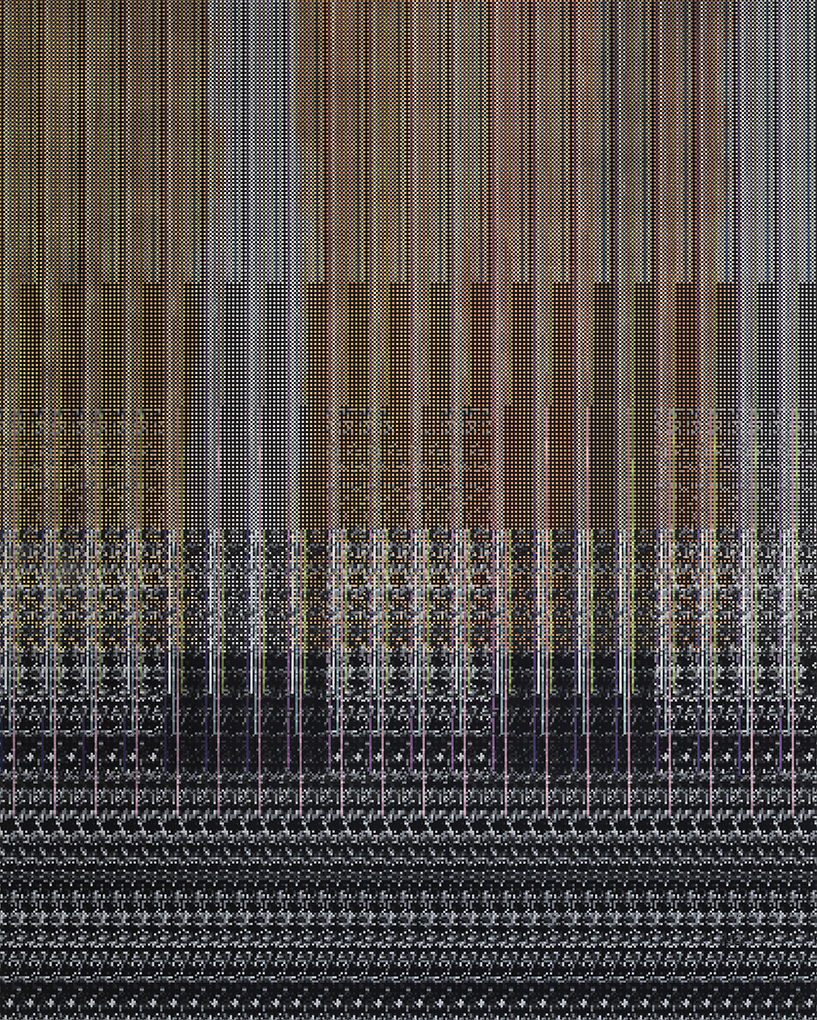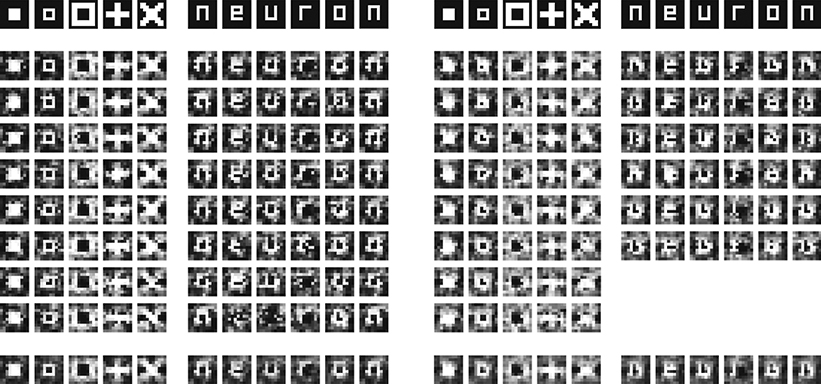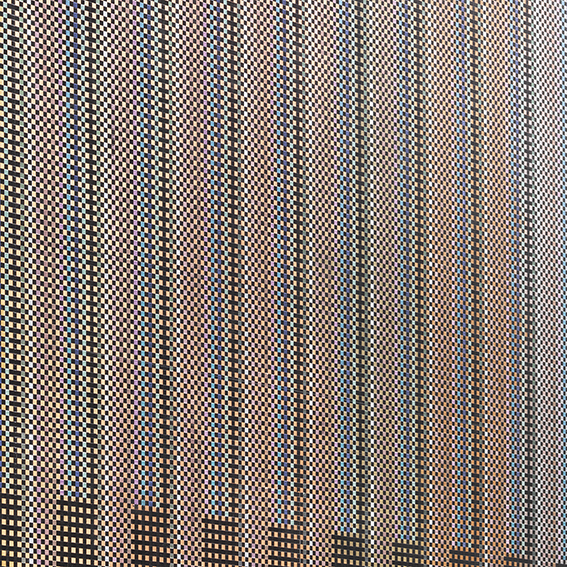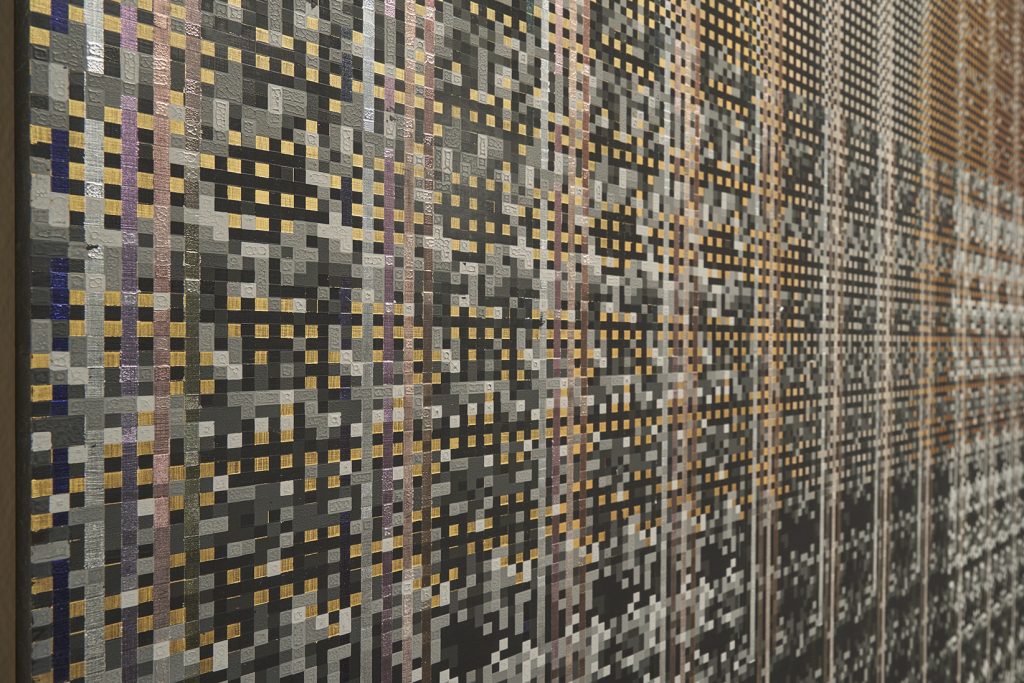
Oriai / 織合い, 2017, Acrylic on wooden panel, 250 × 200cm
Photo: Fumihito Nagai © COMITÉ COLBERT, Tokyo University of the Arts
This painting was inspired by the science fiction novel Facettes by Samantha Bailly, a French author. The story of Facettes revolves around the protagonist, a female neuroscientist who designs clothes. The emotions of the wearer are projected in real time through the clothes that are created. The novel ends with the invention of a dress that combines tradition and technology. Through my grid-painting style, I combined technology with tradition in such a way that they coexist.
The title of the painting is Oriai (織合い). The common Japanese word, pronounced oriai (折合い), means reconciliation or an agreement. I intentionally used the kanji 織 (which means weaving) in the title; this character is read the same as the first part, ori (折), of the word as it is generally written. Bailly’s novel prompted me to realize that finding a harmonious arrangement is the key for us when we face something unusual or different from us. Creating reconciliation, agreement, or seeking harmony is just like weaving a fabric. I incorporated this idea into the title of the painting, which looks like a fabric of different kinds of threads.
The image in Figure 1 symbolizes technology. It is an image showing what a person was seeing, reconstructed from an analysis of neural signals from the brain, using new technology called visual image reconstruction. This cutting-edge technology has potential for applications in creating visualizations of more subjective experiences, such as dreams and mental imagery. Because I found that the image was a good foundation for my painting as it shows how technology and tradition coexist, I used it to print a pattern onto the lower part of the painting through silk-screening.
これは、フランスのSF作家Samantha Baillyの『Facettes』という小説をモチーフに制作した作品です。『Facettes』は女性の脳科学者が感情をリアルタイムに映し出す洋服を作るお話で、小説の最後にはテクノロジーと伝統を融合したドレスが 生まれます。私はこのストーリーからインスピレーションをもらい、テクノロジーと伝統が共存する絵画を描きました。
この絵画のタイトルは『織合い / Oriai』です。本来の日本語のおりあい(折合い)ではなく、「織る」という漢字を使いました。私は『Facettes』を読んだ後、私達が何か異なるものや、普通でないものに直面した時、協調や和解を探ることがとても大切だと改めて感じるようになりました。折合いをつけることは、まるで異なる種類の糸で布を織るような行為です。織物のように見えるこの絵画のタイトルには、そんなメッセージを込めました。
Figure 1は私にとってテクノロジーを象徴するイメージです。visual image reconstruction と呼ばれる技術を使って脳からの信号を分析し、人が実際に見ている画像を再構成したものです。このテクノロジーは、その原理を応用することで、心的イメージや夢のような主観的体験を画像化する可能性をも秘めています。テクノロジーと伝統が共存するペインティングに 適したイメージとして、そのパターンを画面の下方に、シルクスクリーンを使ってプリントしました。
Fig.1 ©Kamitani Lab, ATR


